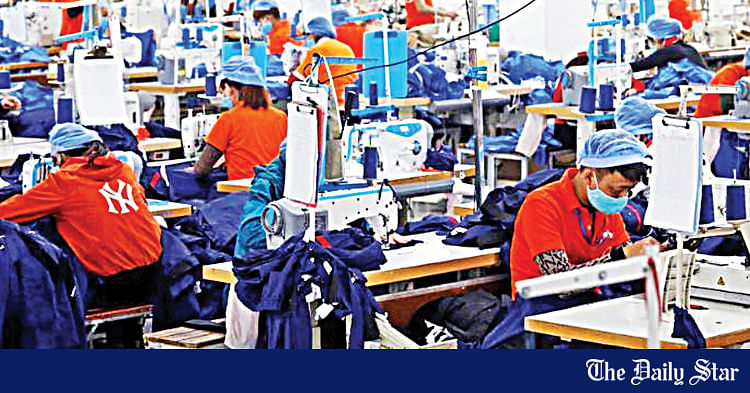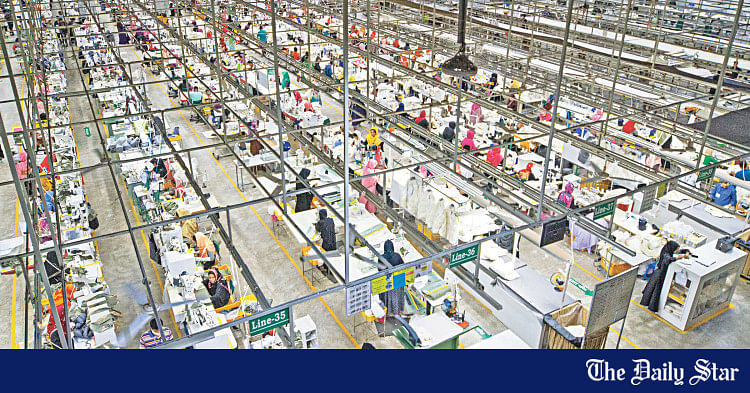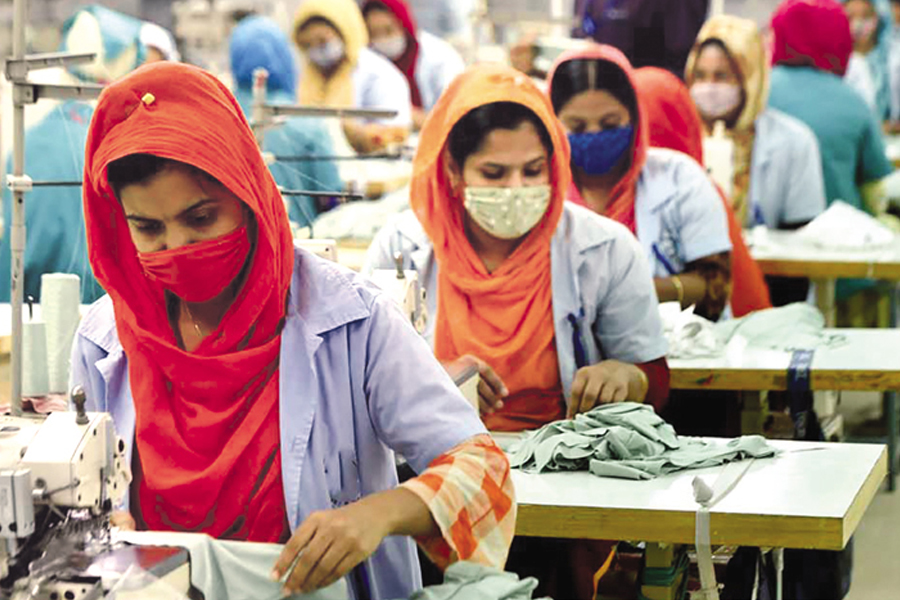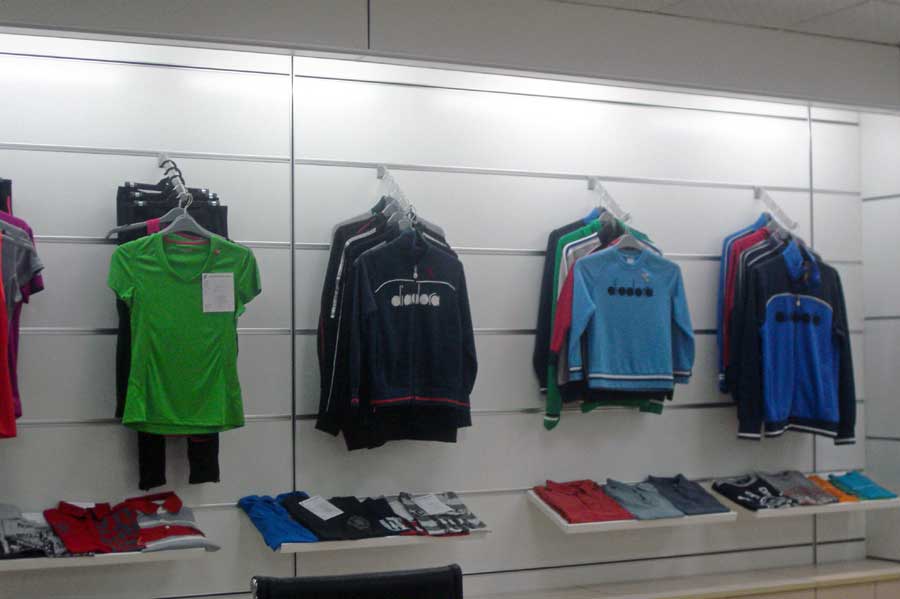Saif
Senior Member
- Messages
- 15,397
- Nation

- Axis Group


US seeks 40pc value addition requirement, say apparel leaders
The US representatives, during negotiations with the Bangladeshi trade delegation, proposed a 40 per cent local value addition threshold. However, the Bangladeshi delegation is negotiating for a relaxation of this requirement, seeking a lower threshold considering the 'Rules of Origin'. Bangladesh
US seeks 40pc value addition requirement, say apparel leaders
FE ONLINE REPORT
Published :
Jul 12, 2025 20:58
Updated :
Jul 12, 2025 20:58

The US representatives, during negotiations with the Bangladeshi trade delegation, proposed a 40 per cent local value addition threshold. However, the Bangladeshi delegation is negotiating for a relaxation of this requirement, seeking a lower threshold considering the 'Rules of Origin'.
Bangladesh Garment Manufacturers and Exporters Association (BGMEA) President Mahmud Hasan Khan (Babu) said this during a meeting with the Dhaka Reporters’ Unity (DRU) Executive Committee on Saturday afternoon at the BGMEA office in Uttara.
DRU president Abu Saleh Akon and General Secretary Mynul Hasan Sohel also spoke at the discussion.
Talking to Financial Express, Bangladesh Knitwear Manufacturers and Exporters Association (BKMEA) President Mohammad Hatem said the Bangladesh delegation also urged for duty-free market access for apparel made from US cotton to increase imports of US cotton, aiming to reduce the bilateral trade gap.
The apparel leaders made these statements while referring to their discussion with Commerce Adviser Sk Bashir Uddin on Friday night during a meeting with USTR representatives.
BGMEA President said, "We have tried to meet the chief adviser to discuss the US tariff issue, but that did not happen."
“We had a meeting with four other advisers on the day before yesterday, following that, last night we talked with the commerce adviser over the phone in the middle of his meeting with USTR. He wanted to know if they impose a 40 per cent local value addition, will it be possible to do business?
40per cent threshold is not final yet and some other instruments are also under discussion”, BGMEA president said, adding that the government should engage businessmen in such discussions, which will set their future.
BGMEA chief also alleged that one of the government representatives failed to negotiate effectively, wasting two valuable months, before another representative was included in the negotiation process.
He further questioned how the government could ignore the largest stakeholder if it truly intends to address such an important issue.
"Now the government is giving excuses, citing a Non-Disclosure Agreement (NDA)," he added.
"We also raised this issue in the meeting the day before yesterday. While we are negotiating for a reduction in US tariffs, how can the government impose a 2% AIT on cotton imports — one of the major export items of the USA?"
"If this message reaches the US government, they might say, 'You're asking us to reduce the trade deficit by buying more cotton.' Isn't that a contradictory move?" questioned the BGMEA President.
Referring to the commerce adviser, BKMEA president Mohammad Hatem said the negotiations were very fruitful, but some issues will take further discussion at the ministerial meeting.
If the 40per cent value addition requirement is enforced, Bangladesh's woven exports to the US market will be severely affected; however, the knitwear and denim sector will not be affected, he added.
FE ONLINE REPORT
Published :
Jul 12, 2025 20:58
Updated :
Jul 12, 2025 20:58
The US representatives, during negotiations with the Bangladeshi trade delegation, proposed a 40 per cent local value addition threshold. However, the Bangladeshi delegation is negotiating for a relaxation of this requirement, seeking a lower threshold considering the 'Rules of Origin'.
Bangladesh Garment Manufacturers and Exporters Association (BGMEA) President Mahmud Hasan Khan (Babu) said this during a meeting with the Dhaka Reporters’ Unity (DRU) Executive Committee on Saturday afternoon at the BGMEA office in Uttara.
DRU president Abu Saleh Akon and General Secretary Mynul Hasan Sohel also spoke at the discussion.
Talking to Financial Express, Bangladesh Knitwear Manufacturers and Exporters Association (BKMEA) President Mohammad Hatem said the Bangladesh delegation also urged for duty-free market access for apparel made from US cotton to increase imports of US cotton, aiming to reduce the bilateral trade gap.
The apparel leaders made these statements while referring to their discussion with Commerce Adviser Sk Bashir Uddin on Friday night during a meeting with USTR representatives.
BGMEA President said, "We have tried to meet the chief adviser to discuss the US tariff issue, but that did not happen."
“We had a meeting with four other advisers on the day before yesterday, following that, last night we talked with the commerce adviser over the phone in the middle of his meeting with USTR. He wanted to know if they impose a 40 per cent local value addition, will it be possible to do business?
40per cent threshold is not final yet and some other instruments are also under discussion”, BGMEA president said, adding that the government should engage businessmen in such discussions, which will set their future.
BGMEA chief also alleged that one of the government representatives failed to negotiate effectively, wasting two valuable months, before another representative was included in the negotiation process.
He further questioned how the government could ignore the largest stakeholder if it truly intends to address such an important issue.
"Now the government is giving excuses, citing a Non-Disclosure Agreement (NDA)," he added.
"We also raised this issue in the meeting the day before yesterday. While we are negotiating for a reduction in US tariffs, how can the government impose a 2% AIT on cotton imports — one of the major export items of the USA?"
"If this message reaches the US government, they might say, 'You're asking us to reduce the trade deficit by buying more cotton.' Isn't that a contradictory move?" questioned the BGMEA President.
Referring to the commerce adviser, BKMEA president Mohammad Hatem said the negotiations were very fruitful, but some issues will take further discussion at the ministerial meeting.
If the 40per cent value addition requirement is enforced, Bangladesh's woven exports to the US market will be severely affected; however, the knitwear and denim sector will not be affected, he added.




